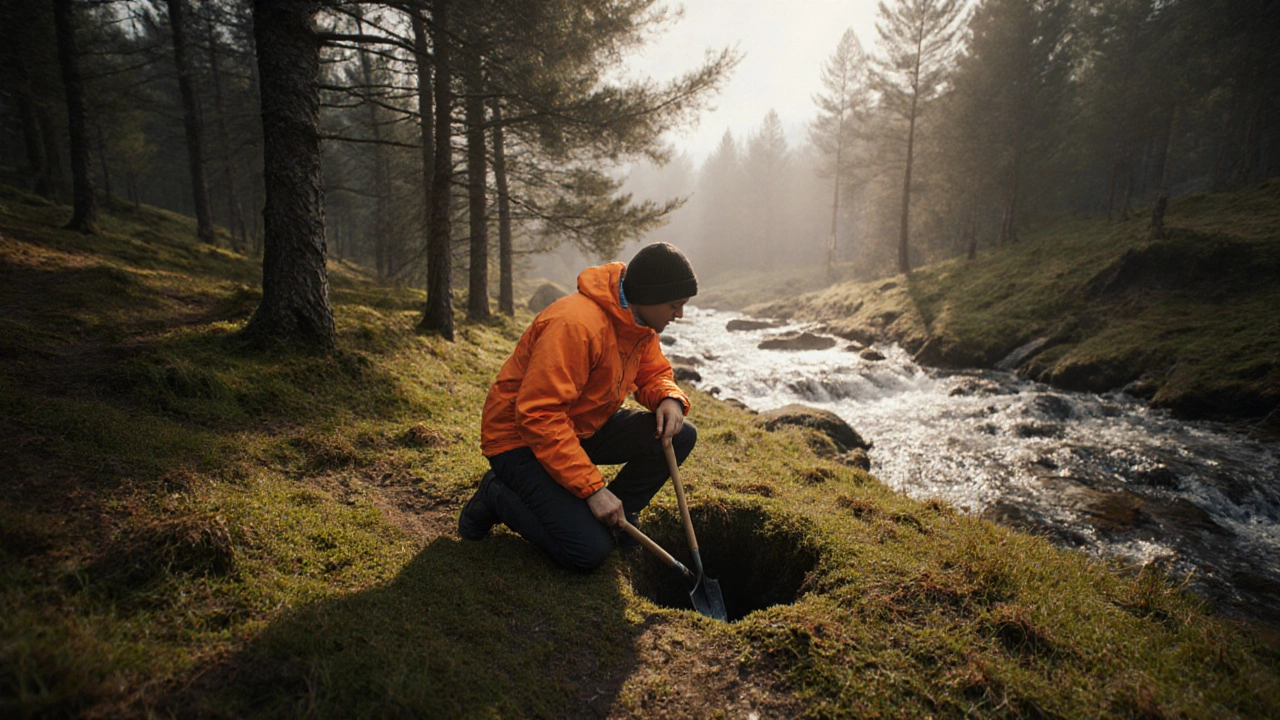
How to Use a Toilet While Wild Camping in the UK
Learn practical ways to handle a toilet while wild camping in the UK, from cat holes and portable toilets to WAG bags, plus legal tips and hygiene advice.
Read MoreWhen planning a night under the stars, understanding the cat hole, a shallow pit used to bury human waste in backcountry settings. Also known as a pit latrine, it offers a low‑tech solution for staying clean outdoors. For many campers, a cat hole is the go‑to method when a camping toilet, a portable container with a sealed waste bag isn’t handy, and it contrasts with a motorhome toilet, a built‑in plumbing system that stores waste in a black water tank. Below we’ll walk through why cat holes matter, how to dig them right, and when to choose other options.
A cat hole encompasses basic waste management for hikers, backpackers, and anyone away from facilities. It requires a few simple steps: pick a spot at least 200 feet from water, dig a 6‑inch deep trench, use it, then cover it with soil. This routine minimizes contamination risks, protects wildlife, and keeps the trail pleasant for the next camper. Compared to a camping toilet, a cat hole eliminates the need for heavy containers or chemicals, making it lightweight and eco‑friendly. However, the practice influences outdoor sanitation standards, especially in high‑traffic areas where overuse can lead to soil degradation.
Another key point is that a cat hole requires a good digging tool—typically a small trowel—and a bit of knowledge about local regulations. Some parks ban pit latrines to preserve fragile ecosystems, pushing campers toward sealed camping toilets or the built‑in waste system of a motorhome. Knowing the rules affects your choice: if you’re in a national park that mandates waste bags, a portable camping toilet becomes the safer bet. Conversely, in remote woods where you can dig deep without disturbing the environment, a cat hole remains the simplest solution.
Environmental impact is a core reason many campers still master the cat hole technique. Properly covered waste breaks down naturally, returning nutrients to the soil without polluting water sources. This process depends on soil composition and moisture levels—wet, loamy ground works best. If the ground is frozen or too rocky, digging a proper pit becomes impractical, and a camping toilet with a waste bag offers a reliable alternative. Understanding these nuances helps you choose the right tool for each situation.
Safety considerations also come into play. A cat hole reduces the chance of encountering animal waste or pathogens that can be present in improperly sealed containers. Yet, you must remember to pack out any toilet paper or hygiene products, or use biodegradable options. This habit aligns with Leave No Trace principles and keeps the trail clean for everyone. When traveling in a motorhome, you might wonder if you can ditch the black water tank and dig a cat hole instead. Regulations generally forbid that, as motorhome waste must stay sealed until disposed of at a dump station. So, while a cat hole is great for backcountry, a motorhome toilet remains essential for road trips and campsite stays.
If you’re new to cat holes, practice makes perfect. Start by digging a test pit in your backyard to get a feel for depth and soil coverage. Then, on your next hike, scout a spot that meets the distance rule, dig, use, and fill. This routine builds confidence, ensuring you won’t waste time or create a mess in unfamiliar terrain. Many seasoned hikers keep a compact trowel in their pack, alongside a small roll of biodegradable toilet paper, so they’re ready for any situation.
Beyond the basics, there are advanced tips that blend cat holes with other sanitation gear. For example, you can use a lightweight, collapsible bucket as a temporary receptacle, then transfer the waste to a cat hole once you have a safe spot. This hybrid method combines the convenience of a camping toilet with the low‑impact nature of a pit latrine. Similarly, if you’re traveling in a motorhome but plan a day hike away from the vehicle, bring a small trowel and a waste bag as a backup—just in case you can’t find a proper dump station.
All these options—cat holes, camping toilets, motorhome waste systems—interact to give you flexibility on the road or trail. By understanding the strengths and limits of each, you can plan trips that respect nature, comply with local rules, and keep you comfortable. Below you’ll find a curated set of articles that dive deeper into each topic, from digging the perfect cat hole to comparing costs of motorhome hire and the best campsite amenities.
Ready to explore the full range of sanitation tips and gear reviews? Scroll down to discover practical guides, cost breakdowns, and safety advice that will help you decide when to dig a cat hole, use a camping toilet, or rely on your motorhome’s black water tank.

Learn practical ways to handle a toilet while wild camping in the UK, from cat holes and portable toilets to WAG bags, plus legal tips and hygiene advice.
Read More